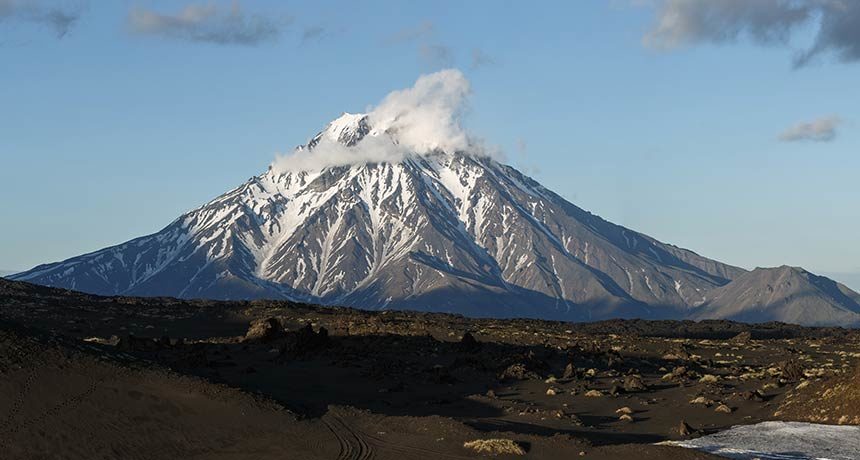
Fewer than 10,500 people live within 100 kilometers of the volcano, called Bolshaya Udina, making a catastrophic eruption that would affect large numbers of people extremely unlikely. When the volcano last erupted is unknown, but it hasn't for at least 10,000 years, so many volcanologists consider it no longer active, or "extinct." But Kamchatka is home to numerous active volcanoes, including nearby Bezymianny, which most recently erupted March 15.
Scientists had detected an apparent increase in seismic activity in the vicinity of Bolshaya Udina beginning in late 2017. So researchers, led by geophysicist Ivan Koulakov of the A.A. Trofimuk Institute of Petroleum Geology and Geophysics in Novosibirsk, Russia, installed four temporary seismic stations near the volcano. From May 5 to July 13, 2018, the stations recorded a swarm of 559 earthquakes.
Overall, from October 2017 through February 2019, researchers detected about 2,400 seismic events, the strongest of which was a magnitude 4.3 earthquake in February. Previous to that 16-month period, scientists detected only about 100 weak seismic events in the region from 1999 to 2017.
Furthermore, by examining how some of the seismic waves decreased in velocity as they traveled through the subsurface, the team found evidence that there might be a pocket of fluid - perhaps magma - directly beneath Bolshaya Udina.
The dramatic uptick in activity, along with the possible detection of magma, could mean that Bolshaya Udina is waking up, the team reports in the July 15 Journal of Volcanology and Geothermal Research.
Other scientists are not so convinced, noting that the data could be interpreted in other ways. Seismicity may indicate the movement of magma, but the volcanic plumbing beneath Kamchatka's volcanoes is complex, and Bolshaya Udina may not be the ultimate destination.
Volcanologist Olga Girina of the Institute of Volcanology and Seismology in Petropavlovsk-Kamchatsky, Russia, says the new study's data are good. But she questions the researchers' interpretation that the seismic activity is related to Bolshaya Udina. Girina, who is part of the Kamchatka Volcanic Eruption Response Team, suspects that the 2018 swarm of earthquakes could instead have been leading up to the Bezymianny eruption in March. There have been no swarms detected since that eruption, she says.
About this story
Where did the idea for this story come from?
When I heard a news report that an extinct volcano in Kamchatka might be waking up, and that an eruption might be catastrophic, I thought it was worthy of a closer look. For volcanologists, both of those terms are actually relative; "extinct" just means it hasn't erupted within the last 10,000 years at least, and "catastrophic" generally refers to the human toll.
How did I report the story?
I started with the original study, to better understand what the authors themselves were saying and what the caveats might be. Then, as I was looking around for other commenters, I saw that a volcanologist I follow on Twitter, Janine Krippner (@janinekrippner), had pointed to a Russian-language interview with volcanologist Olga Girina, an expert on Kamchatka's volcanoes, about the seismic data. So I reached out by e-mail to Dr. Girina, who lives on Russia's Kamchatka Peninsula. I asked her several questions, including whether my understanding (from Google Translate!) of her interview was correct. She clarified a few things. Her take was essentially that the seismic data were solid but she thought there was another, and likelier, way to interpret it.



Earth is restless, and these giants of the volcano world, are helping release the pressures beneath Earth's surface.
Without them, the likelihood of tectonic activity, would most probably begin.